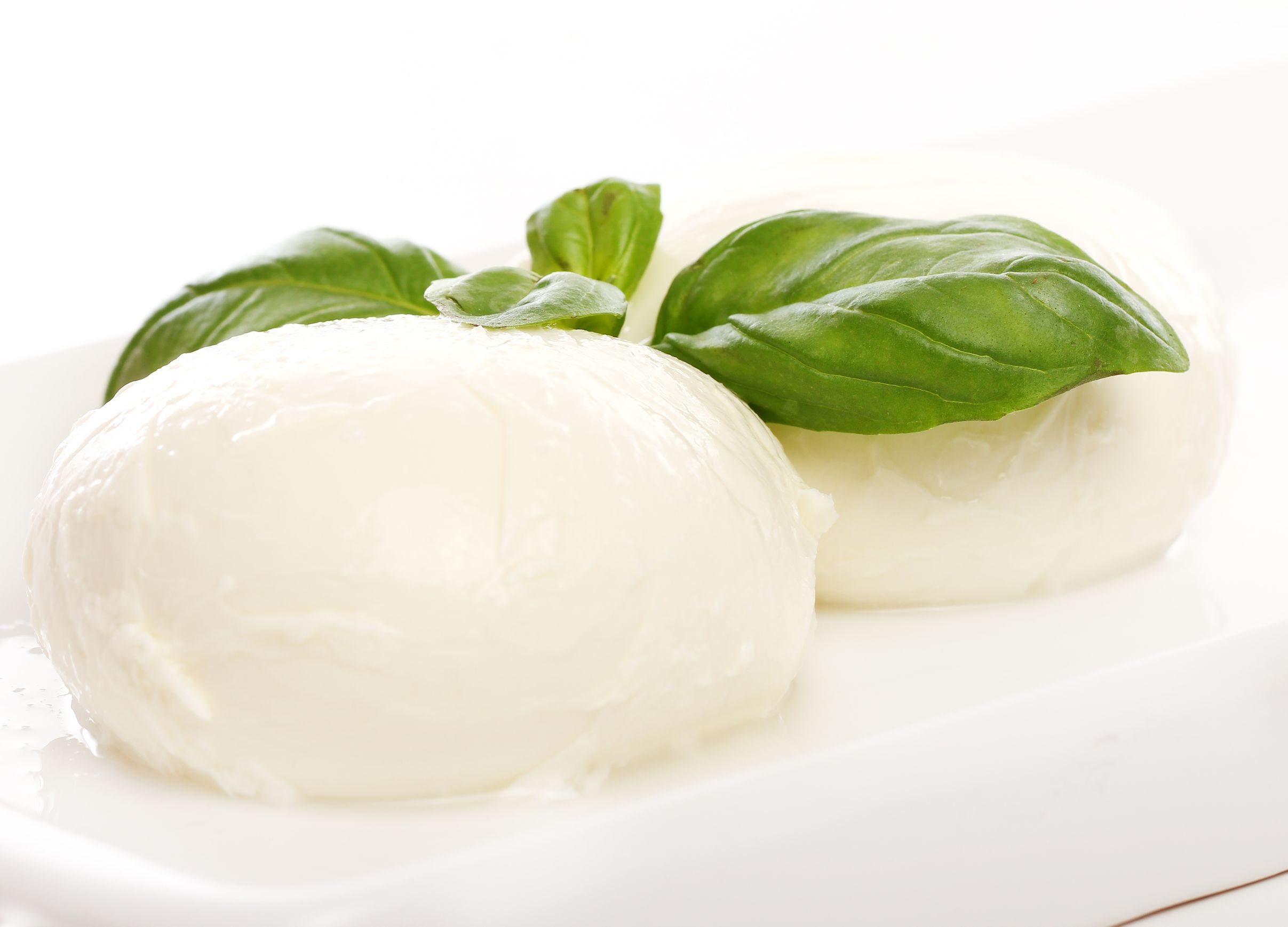Hybrid Recipe Using Citric Acid & Lactic Starter Culture
This recipe will result in a soft mozzarella.
It uses both citric acid and a lactic starter culture which adds flavor and saves time compared to only using a lactic starter culture. Using the culture only would require 4-6 hours, sometimes more to allow the curd to reach the required pH(4.9-5.4) for the curd to stretch and form a high quality mozzarella cheese. If the pH is too alkaline, the curd will stretch/too acidic it will fall apart upon stretching. You will want to use ½ tsp (2.4ml) of citric acid per gallon (the total amount of milk used for your batch) of whole (preferred non homogenized) milk. Follow the usage rate on the lactic starter culture you choose.
Recommended starter cultures are Mesophilic MA4000 series, Thermophilic TA81 series or a combination of Thermophile Aroma Type B along with Flora Danica(or Mesophile Aroma Type B). Rennet recommended are Organic Microbial, Chy-Max Extra or ChyMax M.
1. Warm 50% of the milk to 90f(32c), while keeping the remaining 50% of the milk cold.
2. Sprinkle the starter culture onto the milk and allow it to rest covered for at least one hour. Two hours would be
even better.
3. Add citric acid to a small amount (1/4 cup(61ml)- ½ cup(122ml) depending on the batch size you’re making)
of cool clean water.
4. Gently stir (using only 2-3 strokes) the dissolved citric acid into the cold milk.
5. Gently stir the cold milk into the warmer with the heated milk.
6. Add heat slowly until the milk temperature reaches 90f.(32c)
7. Check pH if you have a pH meter or quality pH strips. Add more dissolved citric acid if pH is above 5.4.
Check again.
8. Dissolve the rennet into approximately 1/8 cup(29.5ml) of cool clean water.
9. Draw the rennet across the warmer from end to end using only 2-3 strokes. Allow milk to set which may take
30-60 minutes. Check for clean break(clean sides when cut with spoon or knife).
10. After clean break is reached, cut curd horizontally and vertically into 1 inch(25.4mm) size pieces.
11. Allow the curd mass to heal or rest for 5-10 minutes.
12. Gently stir curds for 5 -10 minutes or until they begin to sink. While the curds are sinking, heat an amount of
water to 185f(85c) (twice the amount of milk you used).
13. Allow the curds to sink to the bottom of your warmer. Draw off the whey and cut curd mass into 1 inch pieces
or wrap your curd mass and keep in freezer for stretching at another time.
14. Confirm the heated water is 175f(79c)-185f(85c). 165f(73.8c) water is about the minimum temperature needed
to stretch mozzarella curds. Do a stretch test with a small piece of curd by first salting the curd with a little non
iodized salt in a separate bowl and pouring the hot water over the curd piece. Allow heat to transfer into the
curd piece for 30 seconds. Pick up the now hot curd and see if it will stretch by gently pulling on it. The heated
water will allow the curd to spread out or stretch on its own. Roll it in your hand, and stretch it back and forth
on itself. It should now have a shiny surface.
15. At this point place it into a small bowl of cool water. Do not place the curd into a salt brine. A light brine will
make your mozzarella gooey and soften the exterior. This is due to the salt allowing moisture to enter the
cheese.
16. Once you have determined the test piece is stretchable, you can continue with the entire curd mass. If you
have plenty of hot water available you can cut up the remaining curd mass into 1 inch(25.4mm) pieces and
after lightly salting, pour the heated water over the curds. Allow heat to transfer into all the curds and using
two wooden paddles, pick up some of the now stretch, gooey curds and work them together. Your hands do
a better job than paddles, yet you will need to have rubber gloves on so minimize burning hands.
17. The more you stretch the mozzarella, the firmer it will be. The trick is to only stretch it quickly into a ball or
braid and then into some cool water. You will notice white liquid escaping the mozzarella as it stretches.
18. Store your stretched mozzarella in the refrigerator and it can be placed in
olive oil.
Enjoy.
The CheeseMaker


